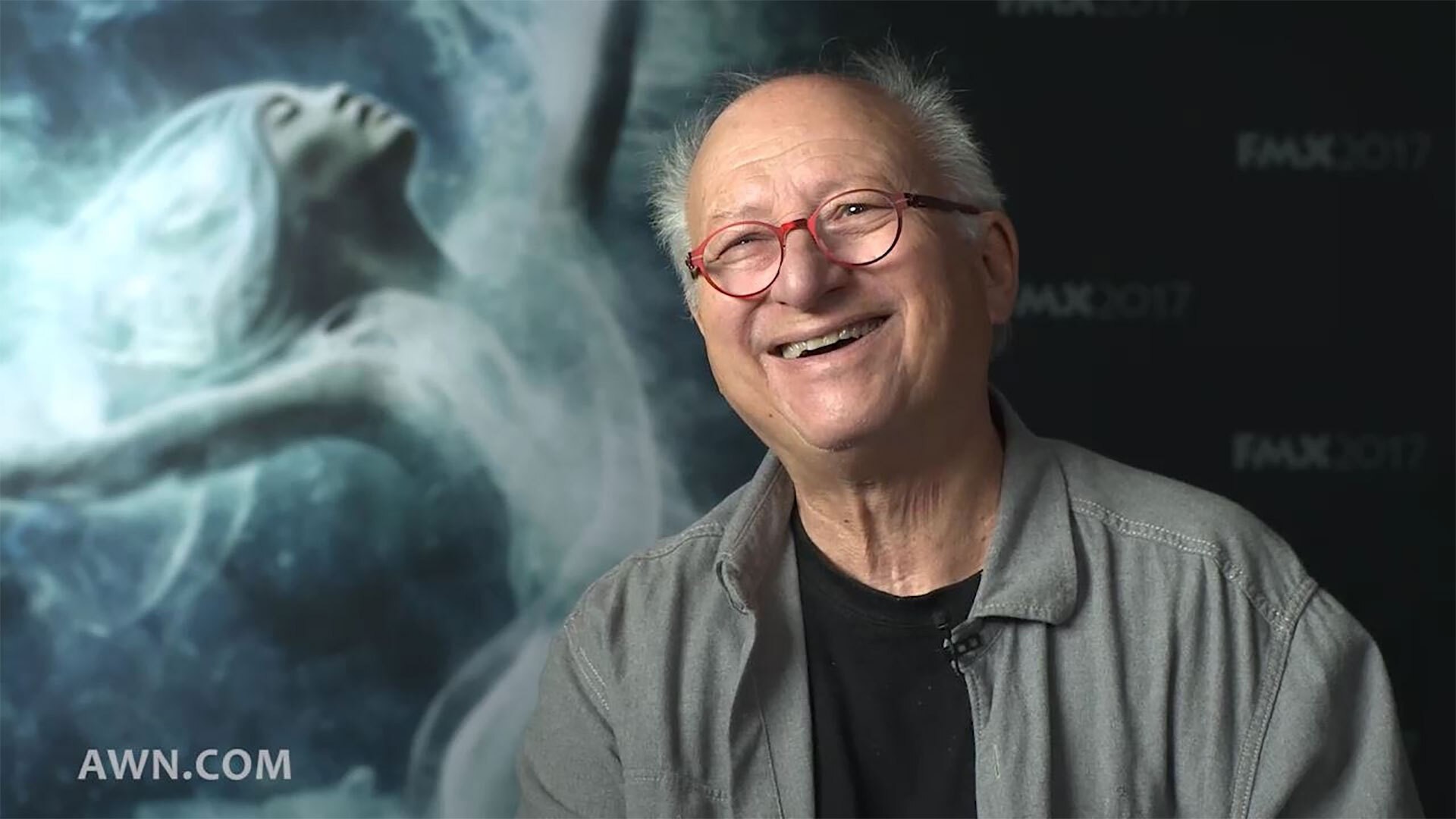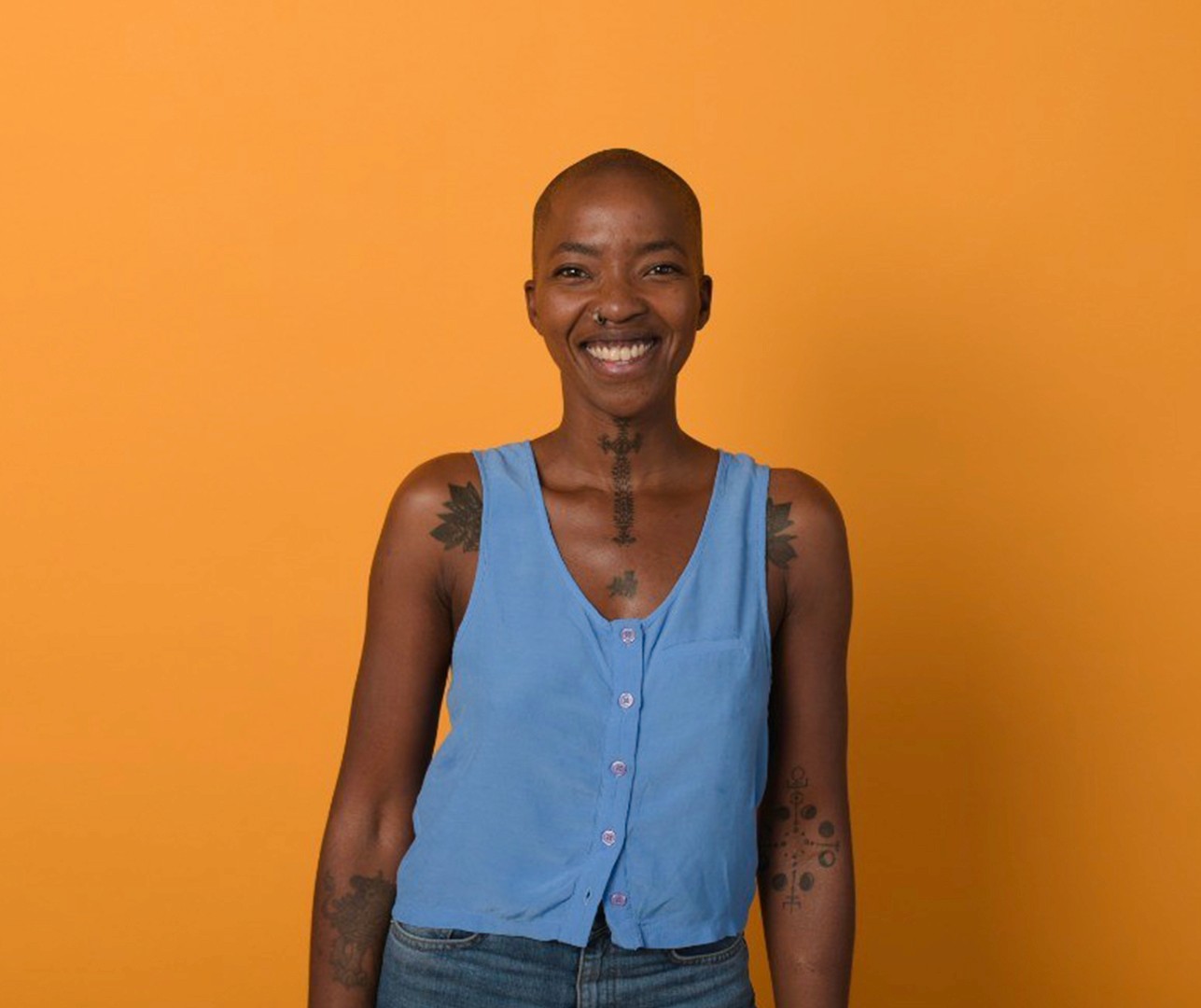
Jul 26, 2023
Creating Magic: A Director's Tale with Tshepo Moche on 'First Totem Problems'
This interview was conducted by Giraffics own Art Director Menna hamdy.
As we continue to seek and introduce you to industry experts from all over the world and offer you a glimpse into their experiences and expertise, we are proud to bring you a distinct character to which we owe much of our success in the First Totem Problems. Tshepo Moche is a South African writer, director, and creator. Her latest works include writing and acting as an executive creative director in the upcoming Disney+ show Kiya, acting as the shadow director on the first animated Netflix Original in Africa, Mama K’s Team 4, and directing and co-writing the short film First Totem Problems with Maame Boateng (Ghana/Canada) and Khadidiatou Diouf (Senegal). To get the inside scoop on the making of the First Totem Problems, we sat down with Moche, who shared her insights on the film’s inspiration, challenges, rewarding experiences, and what she hoped the audience would take away from the film.
Are you more of an enthusiastic listener than a reader? You are in luck because you can now enjoy the exclusive interview with Tshepo in full colors; just click the link below.
In 20 words, Describe what the totem represents.
So, first of all, I used the term totem because I thought it was most globally relatable for people to understand the connectivity behind it. Totems, in their essence, can be plants, animals, ancestral, family surnames, or coats of arms. In this film, totems represent our connection to our ancestors, lineage, and those who have come before us and have passed; they represent where we come from as a people and where we come from just as a person. They represent our communities as a whole and our ethnicities in certain ways.
What part of the movie are you the most proud of?
I'm proud of everything. I'm going to be very honest. From every corner and department and action taken on this journey, there's nothing that I'm not completely proud of. I'm proud of the team that Giraffics assembled together. I'm proud of how we connected so many different cultures, professionals, and creatives within the animation world. I'm proud of the beautiful world and characters we created and how we also worked so hard and pushed back so hard to maintain the authenticity and quality of these characters in so many different ways that I cannot even start to talk about. I'm proud of the men and the women who worked on this team and everything they poured into so passionately. I'm so proud that everybody was able to take ownership of this film, so it was not just an "I" film; it was a film we all made. I'm so proud of the personal connections I made with many of the different creatives. I'm proud of the work we put out, hands down, so I am absolutely proud of everything.
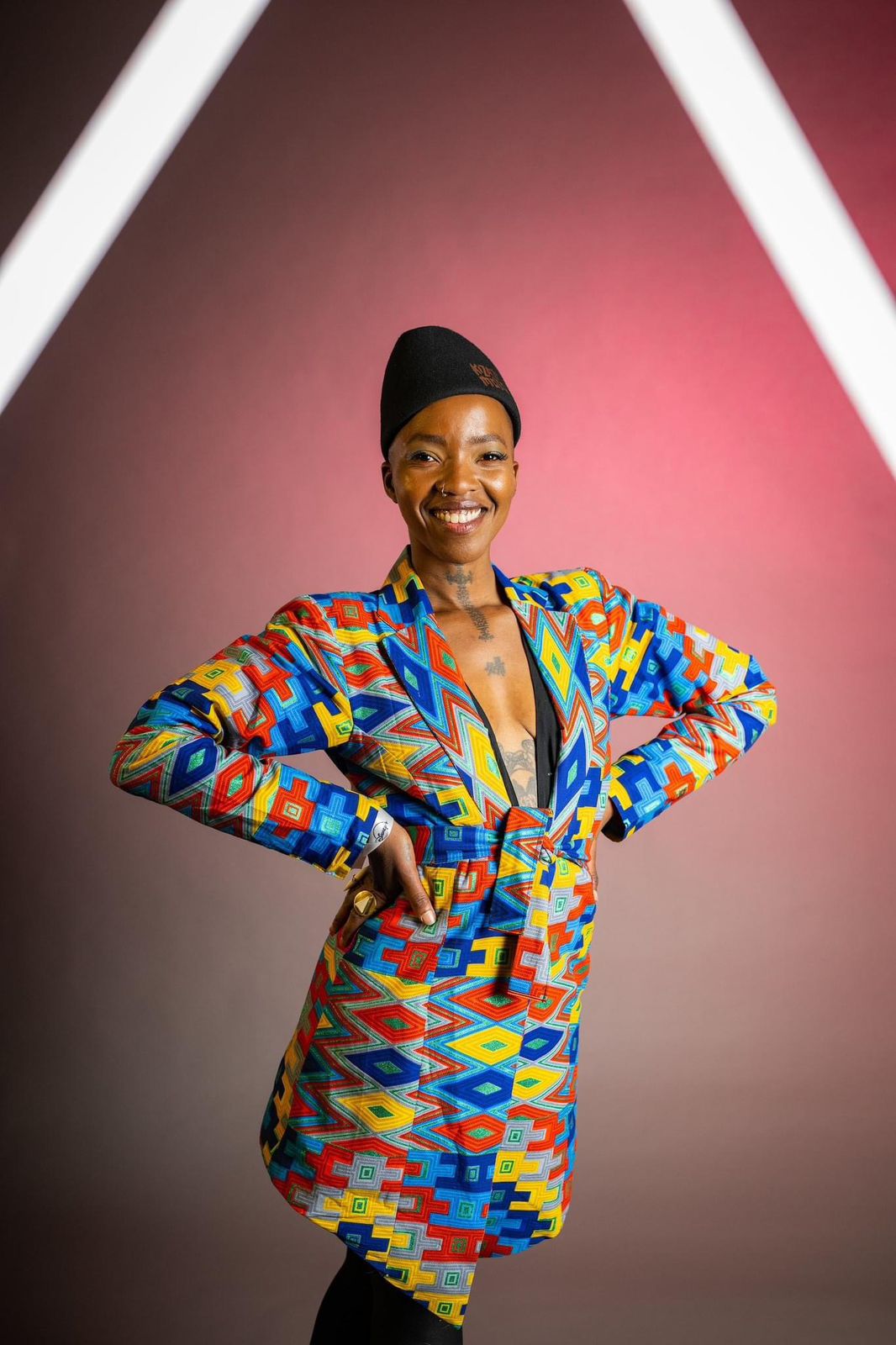
Tshepo Moche
How far does the film align with your initial vision?
As a writer and director, the initial version most definitely matched the final version. I think when we go into these kinds of creative spaces when you initially create something, you have an idea, you have thoughts, you have a message. And when you bring other creators into the space, they bring their own ideas, thoughts, and feelings. These ideas connect in their own ways, and it's so important that there are open safe places for us and for every creative to have a say and be seen and heard in the creative process. So my initial idea on paper might not look like the final version, but in its essence, it is exactly that. What was the initial thought and feeling and want for the story, for the characters, for the film, and the message definitely came up in the final version, and if anything, with the collaboration of everybody on the team, it was even better than what I initially imagined which for me is part of the creative journey; it's the joy of what we do.
To what extent does the protagonist, Sheba, reflect your experiences?
Completely! She reflects everybody's experience. I don't think there's one person on this team who didn't say they didn't have a moment in their life where they didn't feel like Sheba, when you feel like you are not being seen, heard, being told who you are, what you're meant to be, or how you're supposed to move through this world when you know inside yourself what is the right thing for you. So, she definitely reflects my experience of growing up within my family, within my connective search towards my lineage and ancestral connectivity. And not having grown up in my own country for a while and having come back, that was a very big journey for me in a sense to understand who I am in my present but also understand where I come from and the power that holds and being able to take that into my present and use it to help guide my future movements in both good and bad lessons.
How effective was the feedback you received from Disney and TF?
In my own career, I have worked in certain departments and positions where I've given feedback as well as received feedback. So, I was very open, as we should all be, to the feedback. And I think what was really important is that Disney and Triggerfish, at every point of my journey and throughout the film, were not there to give hardline direction. They were there to hold the vision we had initially given them, and they achieved that. I think Disney and Triggerfish, in their feedback, were there to walk on the path that we had already created for ourselves. They weren't there to shift the path or put dirt on the path where we thought it should have been stones. They were just there to hold the space, so their feedback for me was really good. It was challenging, but it's always going to be challenging. We are artists we are sensitive about the things that we're doing, but I never felt at any point that they didn't see what I was trying to do or at any point that they were not hearing me, and that gave me the confidence as well as hopefully it gave my team the confidence to push back to hold certain things and where we needed to not agree on certain things but also to be open to other thoughts and other ideas because also, at the end of the day, we're working with people who have similar experience to us and more experience, and it's only more valuable to take in the things that they're saying and consider it.
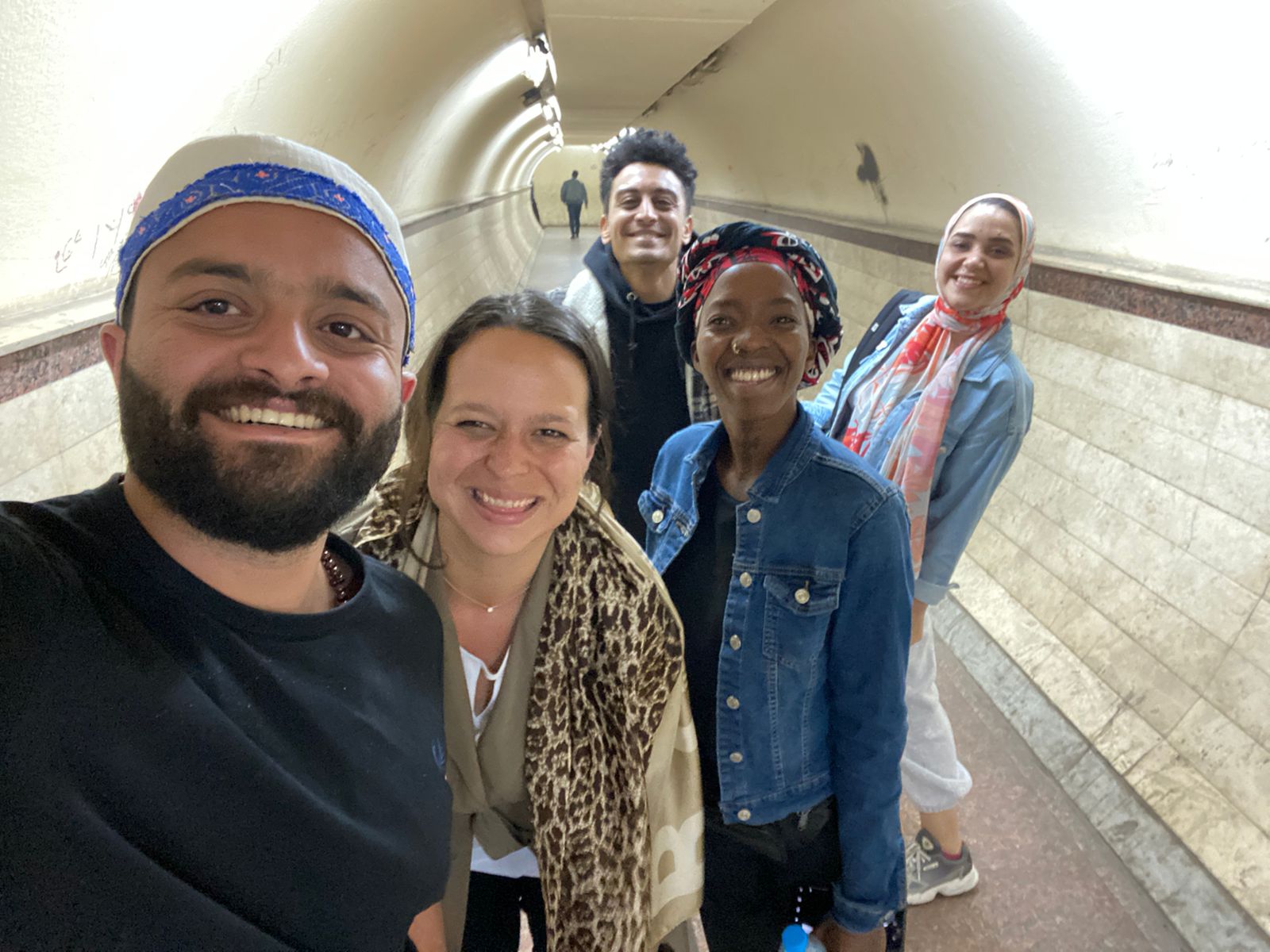
Tshepo and Kaya with some of Giraffics team in Cairo, Egypt
If you could change one thing in the movie, what would it be?
Oh, touchy question! Off the top, I don't think there is anything I would particularly change about the film. We have the spoiled director who wished for more time; you know it would have been nice! But there lies the creative challenge of squeezing everything I was trying to achieve in 10 minutes. I think my team did an amazing job; shout out to the Giraffics production team, especially because they helped and supported me when it was crunch time on some of the things we had to choose to keep or not to keep. Still, at this point, there really is nothing about the movie that I would change. I feel like it is a journey that we all took. It's gotten us here with so many valuable lessons and things, and if anything, if I went back to try and change any of those things, then we wouldn't have found ourselves in the place that we are now, and that place is amazing.
Who is your favorite character in the film?
Ah, another tough question. I breathed these characters out, so they're all my favorites. I would say I definitely collect and connect with Sheba from a personal story perspective and love Sheba stylistically. I also think I've got a touch of favoritism for Gogo. I also love Wewe very much, the ancestral grandfather. He is a fantastically good time. Still, I don't want to favor all the children because that's just not fair. All the characters were created to hopefully hold their own kind of spaces. I hope that everybody relates to each of them in some tiny little way because, at the end of the day, even as I stand as an individual, I am a collection of people that have come before me, so I couldn't pick one character. I am all those characters and I love all those characters.
Was there something you wanted but weren’t allowed to include in the film?
We weren't necessarily allowed not to do anything on our film. Obviously, we are working with this massive machine that is Disney Plus as well as Triggerfish animation studios, and they have a brand and a way, and it is important that we, as directors, as much as these are our films, that are able to navigate and mold our films in a way that also does feed the Disney brand. So, there weren't these hard and fast rules, but we needed to operate within the frameworks of Disney as a company and what they were trying to do with this anthology series, so at no point were we explicitly told we could not do this thing.
What is the most memorable feedback you have received?
I mean there is copious amounts of feedback I received. Some powerful feedback from Hamouda, head of story telling at Giraffics, had to do with a key piece of dialogue that I brought back into the script. I received feedback from one of the EP's Peter Ramsey, every time we had our sessions, his feedback was from a personal perspective of my journey as a director, so a lot of really important feedback that just affirmed that I was moving in the right ways as a director. There was feedback from Sidney Kombo; his feedback really shifted all of us as a team. In dealing with these films, we have to suffer from the pressures and the worries of having to take on the weight of our people in a certain way, our culture, our families, and things like that. We want to say so many things about our countries and our continent, and we have to decide what is for now and what we'll expand later. One of the things Sidney circled us back to, oddly enough, was our characters and character movement. Were they African enough from our perspective and lens? And that's a very weird thing to hear from somebody because we are Africans. I'm South African, and I'm making a film to completely do with my country and our multiple cultures, and you'd think that would be the one thing I wouldn't need to be stressed out about. But there lies the thing; we were struggling with movement and animating our characters and their look and feel from a place where we couldn't understand where it was coming from. And he just nailed it by telling us, "Is this how your grandmother moves?" He was like, you know, women from different cultures walk differently depending on the ground under their feet, the sun scorching, and the clothes they're wearing. Are your characters moving like you know them to actually move? And that kind of feedback was an important note for us, and from then on. I think the team was just shifting through that with a very solid, focused eye around that stuff, so a lot of really good feedback.
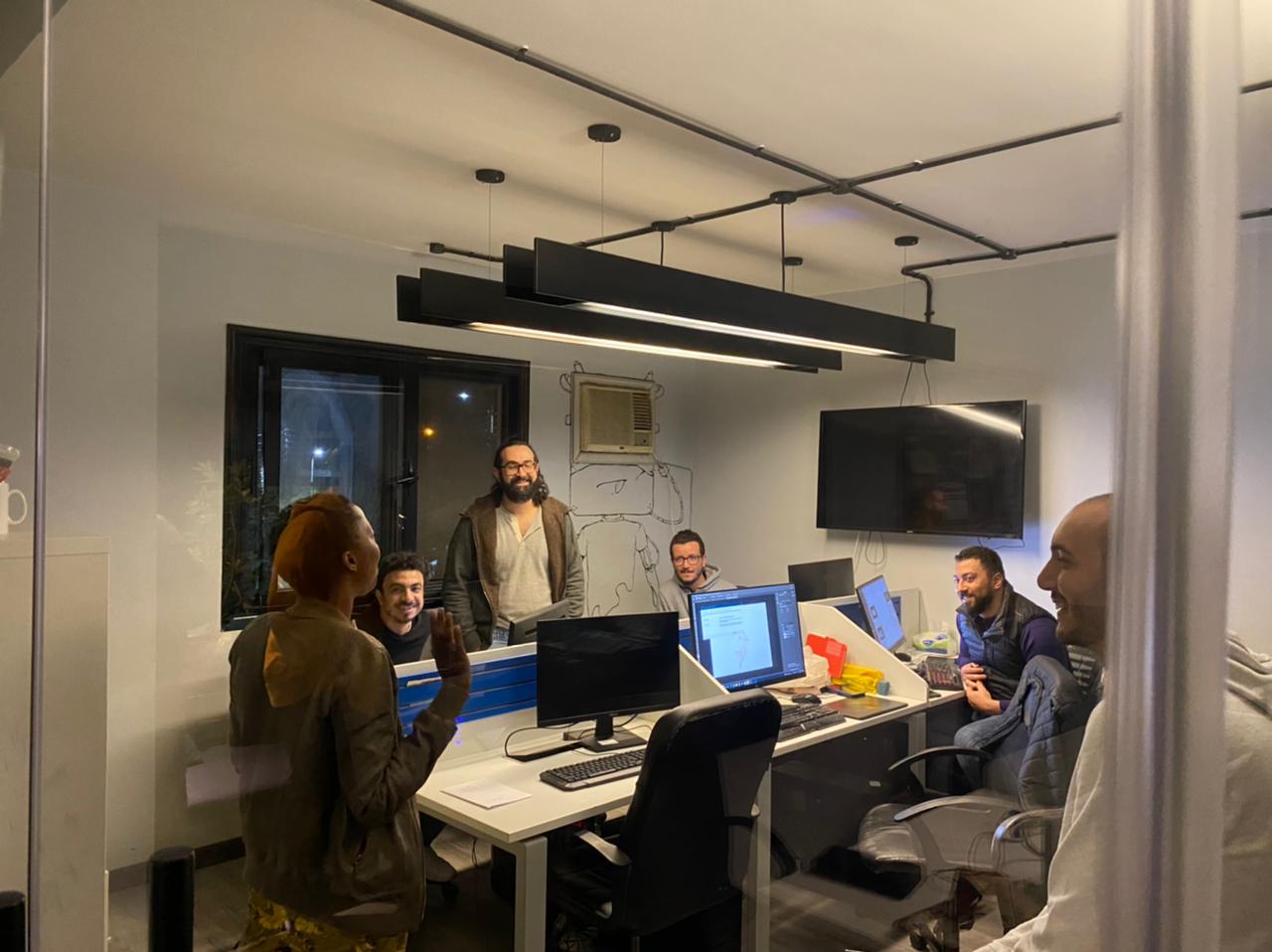
TSheppo from Giraffics office with some of the First totem problems team
How long did it take to transform your initial idea into the final product?
We have been running the First Totem Problems train and journey for 3 1/2 years now because just last week. We had the premiere; it's launching on the 5th of July, so we're still on the journey, but it's been years, it's been three years, it feels like maybe more, but that's OK. I could have continued with my team very specifically on this journey for a few more years, but I am very glad that we're finally going to say we did a thing, and here it is.
How do you manage time between different projects?
I manage my time by having really amazing company partners from Play Nice Pictures. Mark and Rafaela have been amazingly supportive, especially when I took this journey of being a part of the anthology, which took up a massive amount of my time, but the work still continues, you know. There are so many other projects that I wanted to be a part of, and I was already working on, so having really good support if you are a member of a company is really helpful .. I am also working on another show with Triggerfish, Disney, and E1 and having the executive producers acknowledge that and be able to navigate that for me in ways that allowed me to focus on different spaces when I needed to. I mean, it's time management which I'm not great at, but the work must get done, and this is what we do as creatives. If you want to engage in something, you have to know that you're able to do it with as much passion and energy as you could possibly give it, and I'm lucky enough to have been afforded and to find myself working on projects that I truly love and have a passion for it. If I have that, then the time gets managed however it needs to get managed between projects.
How did Disney reach out to you?
Triggerfish put out a call for directors who wanted to pitch stories on the anthology. The original idea behind the anthology was born from one of the members who work at Triggerfish, and Triggerfish then took the idea further, formulated it together, and pitched it to Disney. Disney absolutely loved it and put out a call to all of us directors, writers, and creatives in different departments who they felt could maybe have something to say about this anthology series, and from then on, we pitched some stories. We went through a feedback process, and the chosen films were shortlisted. We pitched again, developed our stories a little further, and then got shortlisted again. So, it was quite a process. I got down to the final ten groups, and in that process, we were constantly getting feedback, going back to the drawing board, and pitching.
How different is it to direct animated movies compared to live-action?
I've written in live-action, but I've never directed live-action. Part of the reasons I discovered along my journey was I always felt definite about being a writer, and I knew there was a space where I could direct and wanted to, but nothing was ever calling to me so strongly, and there was no pressure for it. I was like, it will come when it comes. When Triggerfish and Disney reached out for us to pitch, that's when I felt that pull and that calling. Coming out of this journey, I'm so grateful that the opportunity was presented to me, but also that I took the opportunity. So, directing is different from live-action because you're on set and interacting with humans in a certain way. I love that; I think it's an amazing space to be in, but directing animation, to sit in the processes in a different kind of way, you're responsible for expressing a vision, and you really have to trust the hands that are taking it on and activating it through the work that they're doing because it's not what I do. I'm not a storyboarder, I'm not a concept artist, I'm not a character artist, and I'm not a producer. I don't do those things, and I feel in animation, compared to live-action, there is a push to have to hand over to people to create for you and with you, whereas, in live action that's happening at the moment at that exact moment, you are able to navigate things in a certain way. So it has different levels of control in a way, but past that, that's all the experience I have on that one.
Last but not least, What’s your favorite memory directing totem?
All the memories, even the ones that I've forgotten, end up popping up in my dreams when I'm sleeping, every memory the good and the bad because again, without all the things we experienced, we wouldn't be at the place we're at right now. I will say just in my small corner, one of my favorite memories is definitely my production meetings. My production meetings with Yamen, Maryam, and Menna were always a good time regardless of whether it was a happy time or a crazy chaotic time; also, all my meetings with Jimmy and Abdullah, as well as my head artist, and even with those very specific people. Every meeting and interaction I had with the team as a whole because we were all working from different countries and places, and it was all happening online. My favorite memories were when I was able to connect with people on a really human level outside of the work, even though we were doing the work. We have a stream of videos of Bruno and I from the animation team acting out for references for our character movements. Those are also very good times, but really my favorite memories are just being able to connect with everybody on the team, even if it was on a screen.
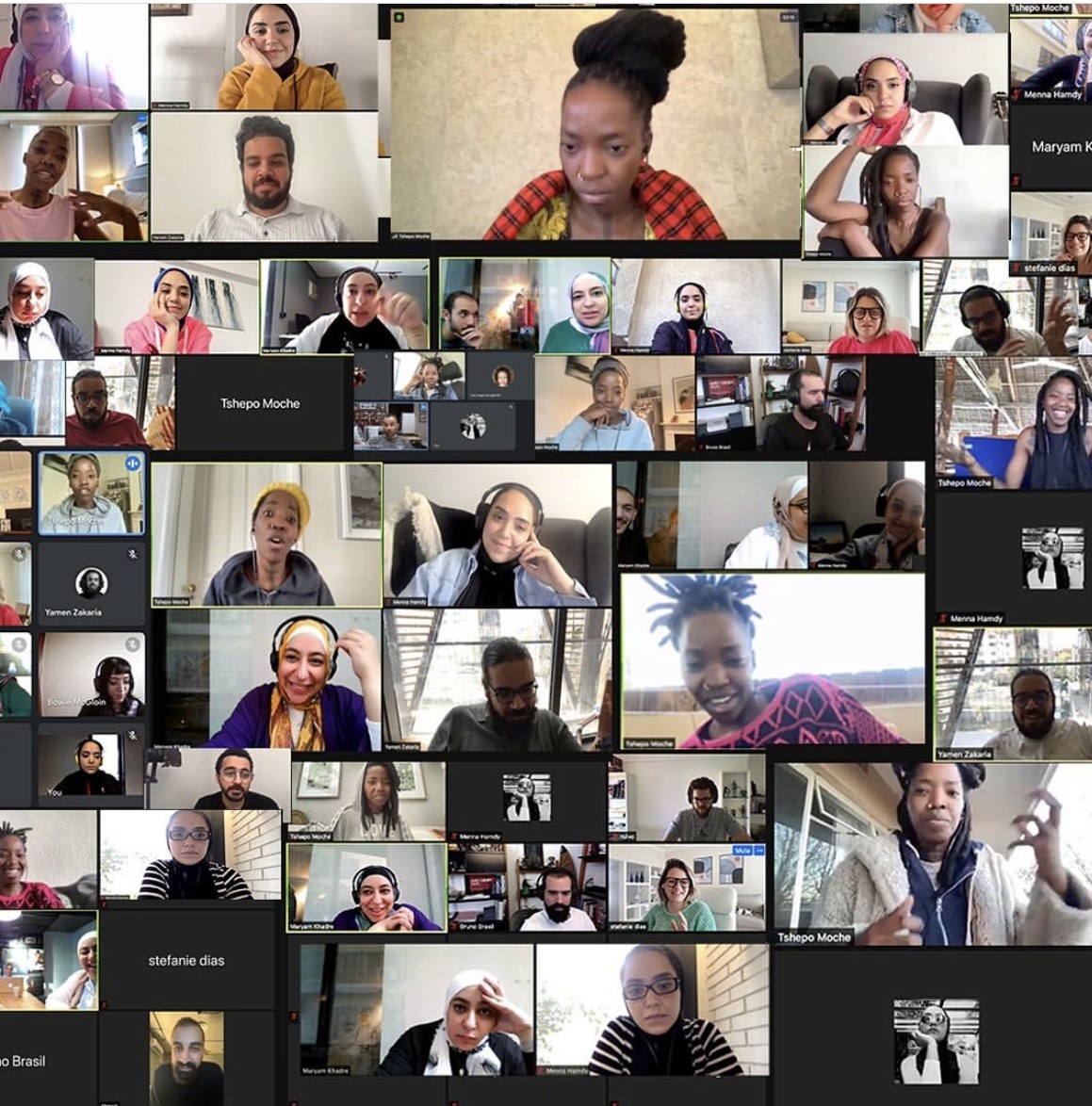
A collage of the many meetings of some of the First Totem Problems team
To summarize, In an epic ride through her journey in the First Totem Problems, Tshepo Moche took us through her experience working with Disney, Triggerfish, and, of course, the Giraffics team. In a much successful endeavor to try something new, Tsheppo found her calling when Diseny+ and Triggerfish were looking for pitches to develop the story idea into something remarkable. After a long process of filtering and pitching, Tshepo landed the director role. Tshepo was a team player, effortlessly merging with the team and creating memories of hard work laced with fun and passion. Knowing the depth of what she was working on, Tshepo was keen on reflecting and integrating her and others, experiences, feelings, and identities in the characters and their world. Tshepo used the term Totem to symbolize ancestors and heritage in a way that represents various communities. Moreover, she worked with the animation team to create characters that embodied South African culture, language, and body movement. Tshepo directed the team in creating characters that acted like people she knew in her community and how to paint them out in the film. And with that, she was able to mold the film to fit Diseny's branding and high-quality standards without changing the film's integrity and essence. As a result, Tshepo and her team were able to create something they are truly proud of.
